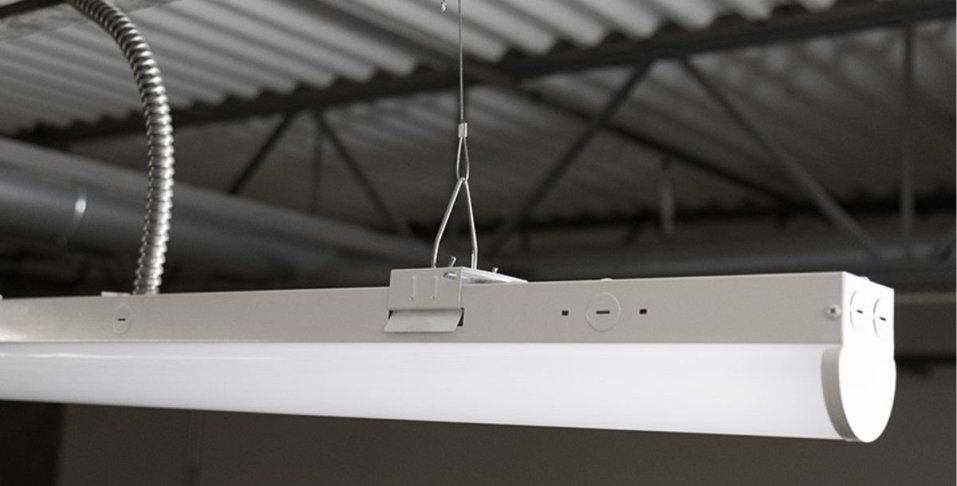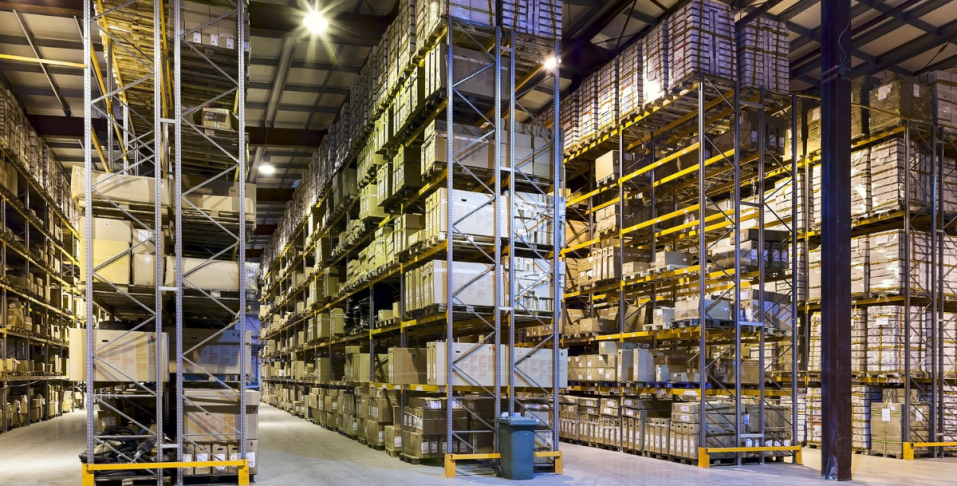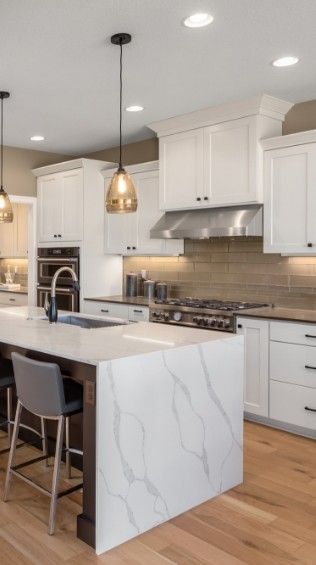Introduction
Selecting the right LED shop lights for your commercial or industrial environment is a critical decision that can impact the workspace's safety, productivity, and energy efficiency. With a wide range of options available, from various sizes and types of fixtures to different features like dimmability and linkability, navigating the choices can be overwhelming.
This LED Shop Lights Buying Guide is designed to simplify the process by providing comprehensive information and practical advice to help you make informed purchasing decisions.
Whether you’re outfitting a small workshop or an industrial facility, this guide will equip you with the knowledge to choose the fixtures that not only meet but exceed your lighting requirements. Choosing the right lighting will improve the safety of your space, increase energy efficiency, and save you money in the long run.
What Are LED Shop Lights?
LED shop lights are fixtures designed specifically for use in workshops, garages, warehouses, manufacturing lines, and other commercial or industrial environments. They use energy-efficient LEDs that provide powerful, uniform illumination, making them ideal for areas requiring increased visibility.


Uses in Commercial and Industrial Settings
- Workshops and Garages: LED shop lights provide bright, focused illumination, which is ideal for detailed work such as automotive repair, carpentry, or assembly tasks.
- Warehouses and Storage Areas: Shop lights can offer consistent lighting across large spaces, improving visibility and safety in areas where heavy machinery and inventory are stored.
- Manufacturing Facilities: In environments where precision and clarity are crucial, such as assembly lines or quality control areas, LED shop lights ensure that workers can perform their tasks accurately.
- Retail Spaces: For back-of-house operations, such as stockrooms or loading docks, LED shop lights provide the necessary lighting to maintain efficiency and safety.
- Agricultural Buildings: LED shop lights are used in barns, greenhouses, and other agricultural structures where reliable, energy-efficient lighting is needed to support various farming activities.
LED shop lights have become the go-to solution for various commercial and industrial applications by combining energy efficiency, durability, and superior light quality.


Key Considerations for Choosing LED Shop Lights
Proper Spacing
Proper spacing is one of the most critical factors to consider when selecting LED shop lights for commercial or industrial environments. The correct placement of lights ensures uniform light distribution and enhances the lighting system's overall effectiveness, improving safety, productivity, and energy efficiency.
- Uniform Illumination: Proper spacing of LED shop lights ensures that light is evenly distributed across the entire area, minimizing shadows, dark spots, and glare. This uniformity is essential in work environments where clear visibility is crucial, such as in workshops, warehouses, or manufacturing floors. Overly close placement of fixtures can lead to overlapping light beams, resulting in excessive brightness in certain areas. This can cause glare, which might strain workers' eyes and reduce overall comfort.
- Energy Efficiency: Correctly spaced lighting can reduce the need for additional fixtures, thereby lowering energy consumption. Efficient lighting design ensures that every light source is used to its fullest potential, avoiding unnecessary energy costs.
- Compliance with Standards: Many commercial and industrial spaces must adhere to specific lighting standards and regulations. Proper spacing helps ensure that your facility meets these requirements, particularly in areas where safety and visibility are legally mandated.


Lighting Measurements
When selecting LED shop lights, understanding key lighting measurements is crucial for ensuring that your space is properly illuminated.
Lumens per Square Foot (Lighting Power Density): Lumens per square foot measures the required light for a specific area by dividing total lumens by the space's square footage, ensuring sufficient lighting.
Calculating Required Light Levels for Different Spaces: Different commercial and industrial spaces have varying lighting requirements, depending on the activities performed in those areas. For example, a general workspace might require 30 to 50 lumens per square foot, while more detailed tasks, such as assembly work, might need 70 to 100 lumens per square foot or more.
First, determine the space's purpose and recommended lumens per square foot to calculate the required light levels. Then, measure the area's square footage and multiply it by the desired lumens per square foot to find the total lumens needed.
Formula:
Total lumens of fixtures ÷ Total square footage of space =Lumens per square foot
Calculation:
1,000 sq. ft.×80 lumens/sq. ft. = 80,000 lumens
Example:
For a 1,000-square-foot workshop where detailed work is performed, you would likely need 80 lumens per square foot.
Guidelines for LED Shop Light Spacing in Various Commercial and Industrial Spaces
Workshops and Garages: In small to medium-sized workshops or garages, LED shop lights should be spaced approximately 4 to 8 feet apart, depending on the ceiling height and the type of tasks performed. Lower ceilings and more detailed work require closer spacing to ensure adequate light coverage.
For garages where vehicle repair or detailed mechanical work is done, consider placing lights directly over workbenches or vehicle bays, with additional spacing guidelines depending on the size and layout of the area.
Warehouses and Storage Areas: Lights should be spaced farther apart in large warehouses with high ceilings—typically 10 to 20 feet apart. The exact spacing depends on the height of the ceiling, the type of fixtures used (e.g., high bay vs. linear fixtures), and the required illumination level.
For aisle lighting in storage areas, it’s crucial to position lights to minimize shadows between racks or shelving units. Spacing should be adjusted to ensure that light reaches all corners and crevices, enhancing safety and visibility for workers navigating these areas.
Manufacturing Facilities: Manufacturing floors often require high-intensity lighting with careful attention to detail. Lights may need to be spaced closer together, especially in areas where precision work is carried out. A general guideline for moderate-height ceilings might be 8 to 12 feet apart, ensuring no critical areas are left underlit.
Consider task lighting in addition to general overhead lighting. Task lights can be installed at workstations where more focused illumination is needed. Space the lights according to the task’s specific needs.
Retail and Showroom Spaces: Proper spacing of LED shop lights is crucial in retail environments or showrooms, where products are displayed, to highlight merchandise without creating harsh shadows. Spacing guidelines may vary, but a typical range could be 6 to 10 feet apart, with adjustments based on the ceiling height and the desired ambiance.
Accent lighting might also be employed to draw attention to specific displays, and spacing should be carefully considered to avoid conflicts between general and accent lighting.
Agricultural Buildings: For barns, greenhouses, and other agricultural structures, LED shop lights should be spaced to ensure even coverage across large open areas, typically 8 to 12 feet apart for moderate ceiling heights. Environmental factors such as humidity and dust may require specific lighting types and spacing adjustments to maintain performance and durability.
Offices: In office spaces, where consistent, glare-free lighting is essential for productivity and comfort, LED shop lights should be spaced closer together, typically 6 to 8 feet apart.
This helps achieve uniform light distribution across workstations, minimizing shadows and eye strain. Additionally, consider using diffusers or indirect lighting to reduce glare on computer screens and reflective surfaces.
In all these settings, it’s essential to consider the specific requirements of your space and the tasks being performed when determining the appropriate spacing for LED shop lights. By following these guidelines, you can achieve optimal lighting that supports your facility's safety, productivity, and energy efficiency.
Check out our blog for more information about recommended lighting levels for different commercial and industrial spaces.


Linkability with LED Shop Lights
Linkability allows multiple LED shop lights to be connected and powered from a single source. This simplifies installation and expansion (if necessary), particularly in large commercial or industrial spaces requiring consistent lighting. Linkability simplifies setup and ensures well-lit, energy-efficient large spaces.
Linkability streamlines wiring by connecting fixtures without needing separate electrical lines for each individual fixture. This reduces installation time, minimizes potential wiring issues, and makes expanding lighting systems easier by integrating new fixtures into an existing setup without complex rewiring.
Benefits of Linking Shop Light Fixtures Together
- Streamlined Wiring: Fewer wires reduce clutter and simplify maintenance while also minimizing wiring errors.
- Consistent Lighting: Linking ensures uniform illumination across large areas, eliminating dark spots and shadows.
- Energy Efficiency: Sharing a power source can optimize energy use, with the ability to control all linked fixtures from a single switch or dimmer.
- Reduced Installation Costs: Simplified wiring lowers both installation costs and labor time.
Ideal Scenarios for Using Linkable LED Shop Lights
- Long Aisles: Continuous illumination along the aisles enhances visibility and safety.
- Assembly Lines: Consistent lighting improves precision and reduces eye strain in manufacturing environments.
- Expansive Workspaces: Linkable shop lights provide uniform lighting over large areas, allowing for easy system expansion as needed.


Remote Controls and Dimmability in LED Shop Lights
Some LED shop light fixtures offer dimming options like selectable wattage and 0-10V, allowing users to adjust brightness levels to suit different needs. Remote controls enhance convenience by enabling easy adjustments from a distance, especially in large or complex spaces and areas with high ceilings.
Benefits of Dimmability
Dimmability helps reduce energy consumption, leading to cost savings and allows for customizable lighting environments. This flexibility is crucial in commercial and industrial settings where lighting needs can vary throughout the day.
Dimmable LED shop lights are perfect for offices, manufacturing facilities, retail spaces, warehouses, and educational institutions. They allow for energy-efficient lighting adjustments that improve comfort, safety, and productivity.
Remote-controlled LED Shop Lights
Look for remote controls that are easy to use, have a suitable range, and are compatible with your lighting system. Many shop light fixtures have optional Networked Lighting Controls and can be controlled via a smartphone app, Bluetooth, or a remote controller. Additional features such as timers, and multi-zone control can further enhance functionality.
Ideal Scenarios for Remote-controlled Shop Lights
Remote controls are ideal for spaces with high ceilings, hard-to-reach areas, or large, complex environments where manual adjustments would be inconvenient or unsafe. Remote controls and dimmability offer significant advantages in energy efficiency, convenience, and lighting customization in various commercial and industrial settings.
Types of LED Shop Lights
LED shop lights come in various types, each designed to meet specific lighting needs in commercial and industrial environments. The following are the most common types of LED shop lights:


Linear 8-foot and 4-foot LED Shop Lights
- Description: Long, tube-like fixtures, typically available in 4-foot and 8-foot lengths
- Best For: Ideal for workbenches, garages, and general-purpose lighting in workshops
- Advantages: They provide wide, even light distribution, making them suitable for large, open spaces


UFO High Bay LED Lights
- Description: Named for their circular, disc-like shape, these lights are designed for high-ceilinged spaces
- Best For: Warehouses, gymnasiums, and industrial facilities with ceilings above 15 feet
- Advantages: High lumen output with a focused beam angle, excellent for illuminating large vertical spaces


Linear High Bay LED Lights
- Description: Similar in shape to linear LED shop lights but designed for higher mounting heights
- Best For: Large spaces like warehouses, big-box retail stores, and manufacturing facilities
- Advantages: They offer powerful illumination and are available in various lengths to suit different space requirements


Wraparound LED Shop Lights
- Description: These lights have a wraparound lens that diffuses light from the sides and bottom of the fixture
- Best For: Areas where both direct and ambient lighting are needed, such as parking garages or stairwells
- Advantages: Provides uniform light distribution and is ideal for spaces requiring consistent brightness


Linkable LED Shop Lights
- Description: These fixtures can be connected, allowing multiple lights to operate from a single power source
- Best For: Long aisles, assembly lines, and areas where consistent, uninterrupted lighting is essential
- Advantages: Simplifies installation and expansion, reducing the need for extensive wiring. Not all fixtures have to be on at the same time.


LED Strip Lights
- Description: Flexible, adhesive-backed strips that can be mounted on various surfaces
- Best For: Under-cabinet lighting, accent lighting, or highlighting specific work areas
- Advantages: Highly versatile and easy to install, offering customizable lighting solutions


LED Shop Light Panels
- Description: Flat, panel-shaped lights designed to provide broad, even lighting across a wide area
- Best For: Office spaces, retail environments, and other areas requiring low-glare lighting
- Advantages: Sleek, modern appearance and delivers uniform light with minimal shadows


Retrofit LED Corn Bulbs
- Description: Bulbs designed to retrofit traditional high-intensity discharge (HID) lamps in existing fixtures
- Best For: Street lighting, parking lots, warehouses, manufacturing plants and large outdoor areas
- Advantages: High lumen output, energy-efficient, and easy to install in existing fixtures, offering a long-lasting lighting solution


Strip Light Fixture Retrofit Kits For Fluorescent Tubes
- Description: LED strips designed to retrofit traditional high-intensity discharge (HID) or fluorescent tube light fixtures
- Best For: Existing fluorescent or HID tube lights
- Advantages: High lumen output, energy-efficient, and easy to install in existing fixtures, offering a long-lasting lighting solution
Each type of LED shop light has unique features suited to different applications, allowing businesses to choose the right lighting solution for their specific needs.
LED Shop Light Installation Best Practices
Tips for Ensuring Optimal Light Coverage and Avoiding Dark Spots
- Proper Spacing: Position fixtures according to the manufacturer's recommendations for optimal spacing, considering ceiling height and room size. This helps ensure even light distribution without dark spots.
- Use Reflective Surfaces: Where possible, utilize reflective surfaces like light-colored walls or ceilings to enhance light distribution and reduce shadows.
- Consider Beam Angle: Choose fixtures with the appropriate beam angle for the space. Narrower beam angles focus light on specific areas, while wider angles spread light more broadly, helping to avoid dark spots.
- Test Before Finalizing: After initial installation, test the lighting setup in the space to identify any dark spots or areas that need additional coverage. Adjust positioning or add fixtures as needed.


Tips for Extending the Lifespan of LED Shop Lights
- Use Appropriate Dimmers: If your lights are dimmable, ensure you use compatible dimmers. Incompatible dimmers can cause flickering and reduce the lifespan of the LED lights.
- Avoid Excessive Heat: Ensure proper ventilation around fixtures to prevent excessive heat buildup, which can shorten the lifespan of LEDs. Also, avoid installing fixtures in areas with high ambient temperatures unless they are rated for such conditions.
- Quality Fixtures: Invest in high-quality LED shop lights from reputable manufacturers. Cheap or substandard fixtures are more prone to failure and may not deliver the expected lifespan.
- Surge Protection: Use surge protectors to guard against voltage spikes that can damage LEDs and reduce their lifespan.
Following these installation and maintenance tips ensures that your LED shop lights perform optimally, provide consistent coverage, and have a long operational life, maximizing your investment and maintaining a safe, well-lit environment.
Connect with a Commercial Account Expert
It’s important to consult with our Commercial Account Experts to make the most informed decision. Our team can provide tailored solutions that meet your space's specific needs, ensuring that you choose the best lighting for your requirements.
If you have product inquiries or would like to consult with one of our lighting experts, please don't hesitate to contact us. We’re here to help you achieve the perfect lighting solution for your commercial or industrial space!





